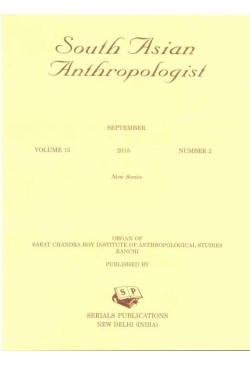
South Asian Anthropologist
Frequency :Bi-Annual
ISSN :0257-7348
Peer Reviewed Journal
Cultural Changes among the Santals of Eastern Nepal
Mini Nutritional Assessment and Instrumental Activities of Daily Living: Association of Social Support among the Oldest-old People of Midnapore Town of Paschim Medinipur District, West Bengal, India.
Quest for Peace and Harmony: An Attempt of Social Audit of Changing Situation in Bastar
Kinship Terms of the Kurmali: An Anthropo-Linguistic Study
Gender Equity in Community Forest Management System in Nepal: A vision from Below
Obesity and Morbidity Among Adult Moria Muslims of Laluka Village, Dibrugarh District, Assam, India
Following the Migration Trajectory: Exploring the Ambivalent Origin of Theravadi Buddhists of North Bengal
Elements of Biological Factors Influencing Infant and Child Mortality among the Zou of Manipur, Northeast India
Development of Dermatoglyphics in India
Professor Probodh Kumar Bhowmick: A Relentless Activist for the Uplift of the Lodhas of West Bengal